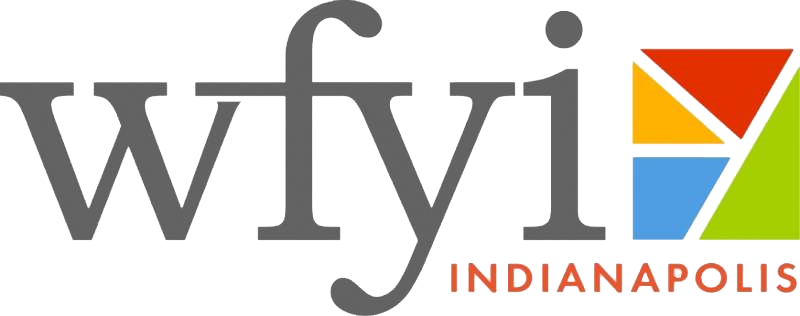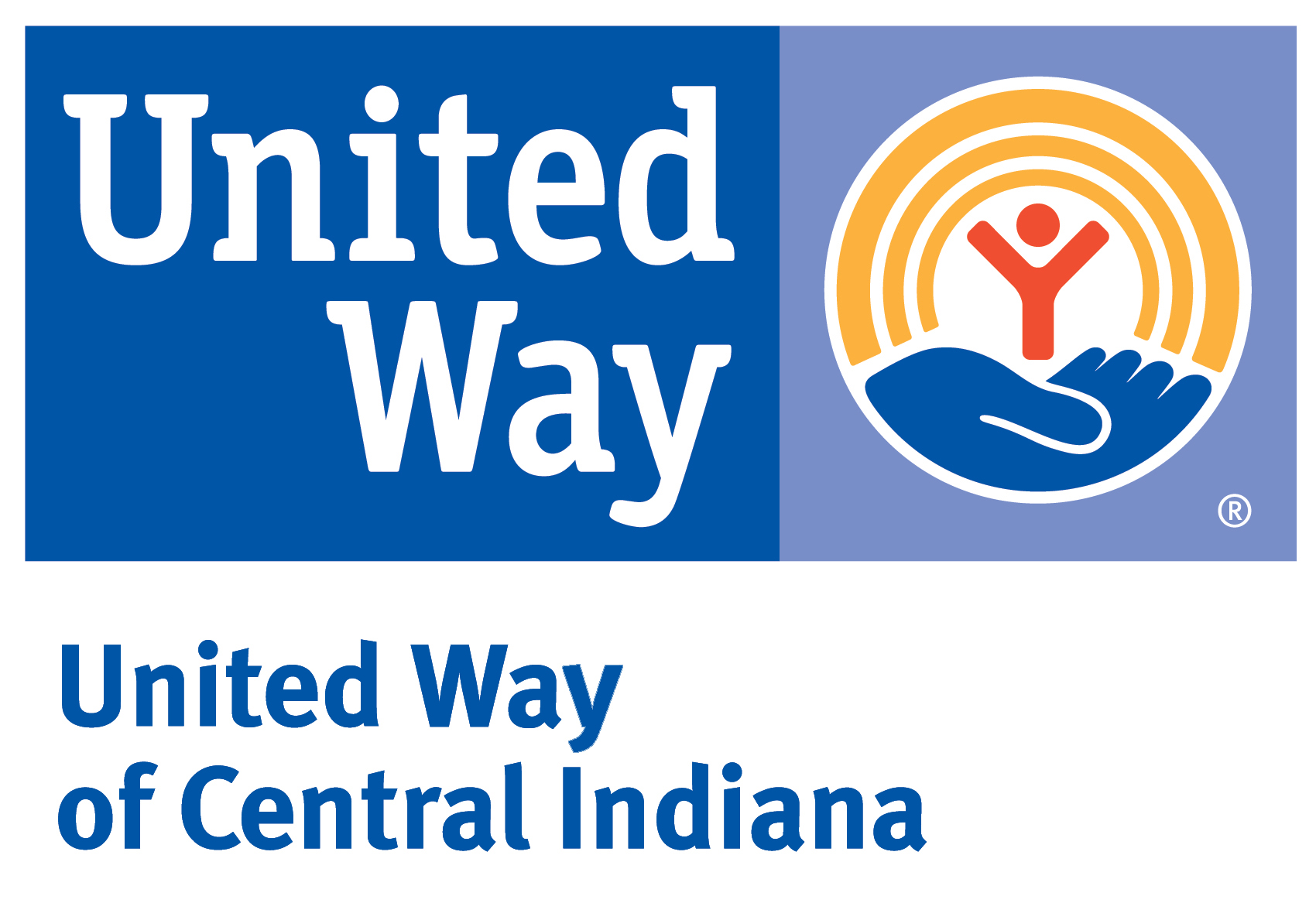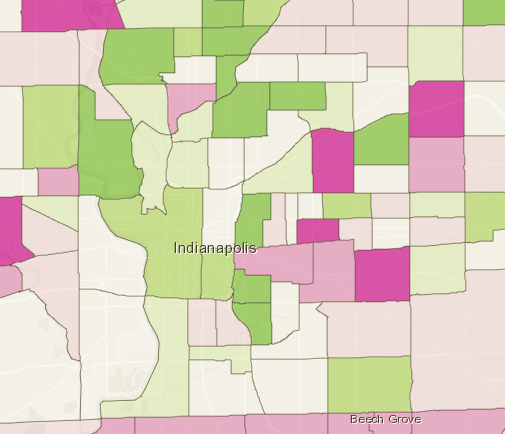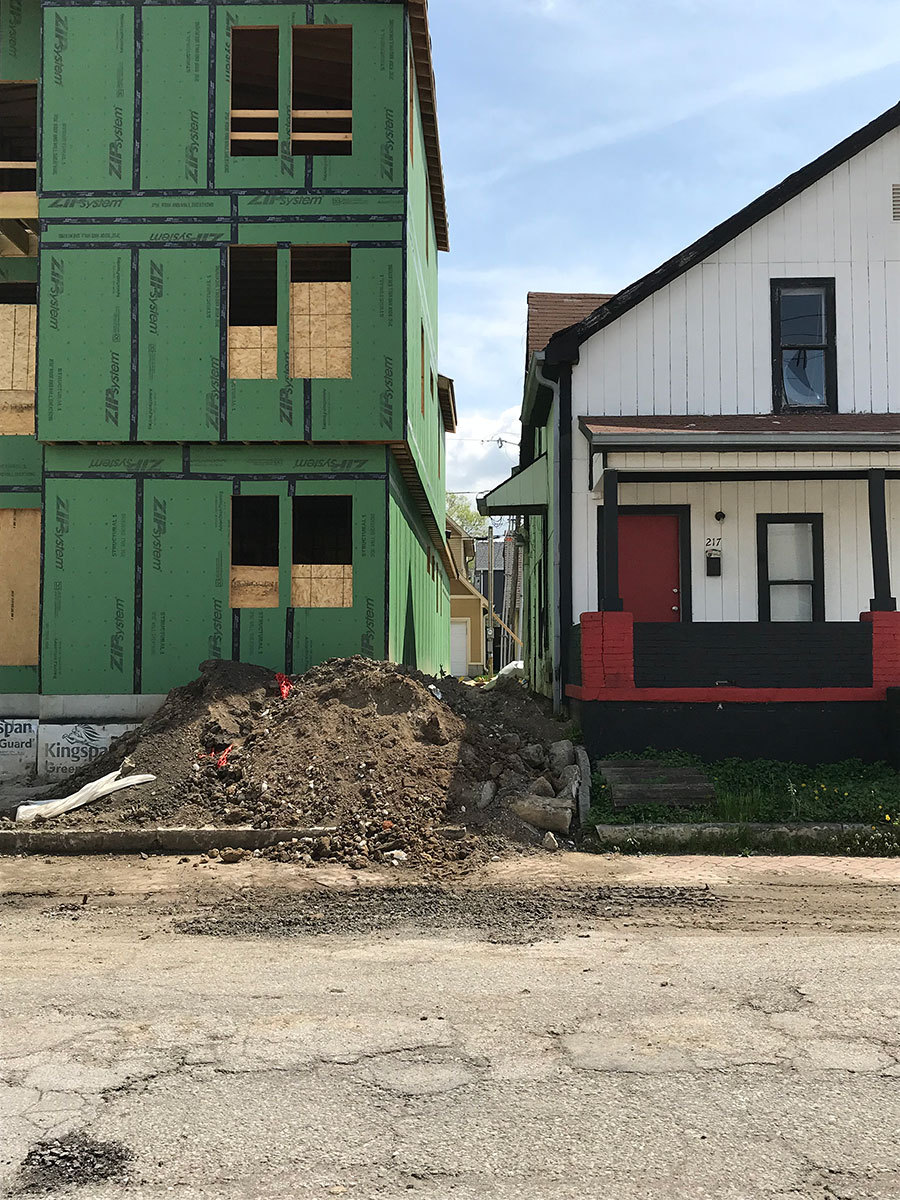Neighborhood Change Since 1970: Suburbanization, Gentrification, and Suburban Redevelopment
SAVI Talks - June 2018While suburbanization and White flight led the White population to drop by 120,000 in Indianapolis’ core and early suburbs, gentrification has recently led to major cultural changes in some of these same neighborhoods.
Across the Indianapolis region, neighborhoods have experienced rapid cultural changes and shifting housing demand. Learn more in the Community Trends Report, Neighborhod Change Since 1970.
In June, we facilitated a community conversation about neighborhood-level demographic changes across the region from 1970 to today, exploring the trends of suburbanization, gentrification, and suburban redevelopment.
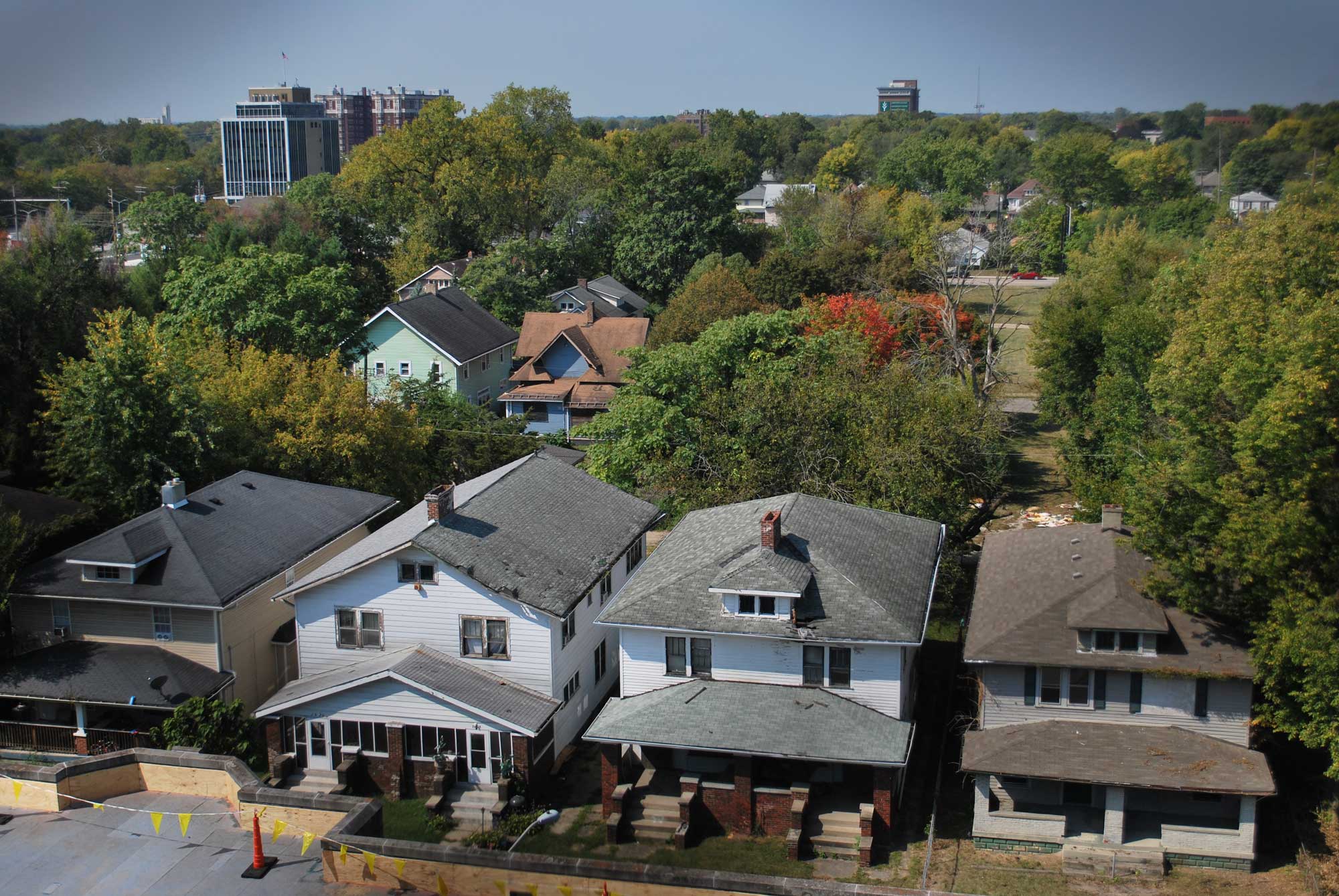
New construction in Highland Park. Income for the average family in Highland Park/Cottage Home has gone up 68 percent from 2010-2016, while falling one percent across the region.
Matt Nowlin / The Polis Center
In the past fifty years, the 1970s and 2010s have been the fastest changing decades in terms of economic and demographic indicators. In the 1970s, suburbanization contributed to population loss and economic decline in urban areas.
Since 2010, many core Indianapolis neighborhoods have reversed these trends, growing wealthier, whiter, and more college-educated. Still, many have not experienced positive economic change. Half of Indianapolis residents live in neighborboohds with significant income declines over the past five decades. Read more…
Articles and Story Maps
Explore interactive content built on our neighborhood change research.
No Results Found
The page you requested could not be found. Try refining your search, or use the navigation above to locate the post.
Authors
Kelly Davila,
Senior Research Analyst,
The Polis Center
Matt Nowlin,
Research Analyst,
The Polis Center
Unai Miquel Andres,
GIS and Data Analyst,
The Polis Center
Panelists
Imhotep Adisa,
Executive Director, Kephrw Institute
Jeff Bennett,
Deputy Mayor for Community Development, Office of Mayor Joe Hogsett – City of Indianapolis
Meredith Brickell,
Associate Professor of Art at DePauw University and Project Leader for the House of Life Project
Chris Pryor,
Vice President of Government & Community Relations, Metropolitan Indianapolis Board of Realtors
Event Partners
